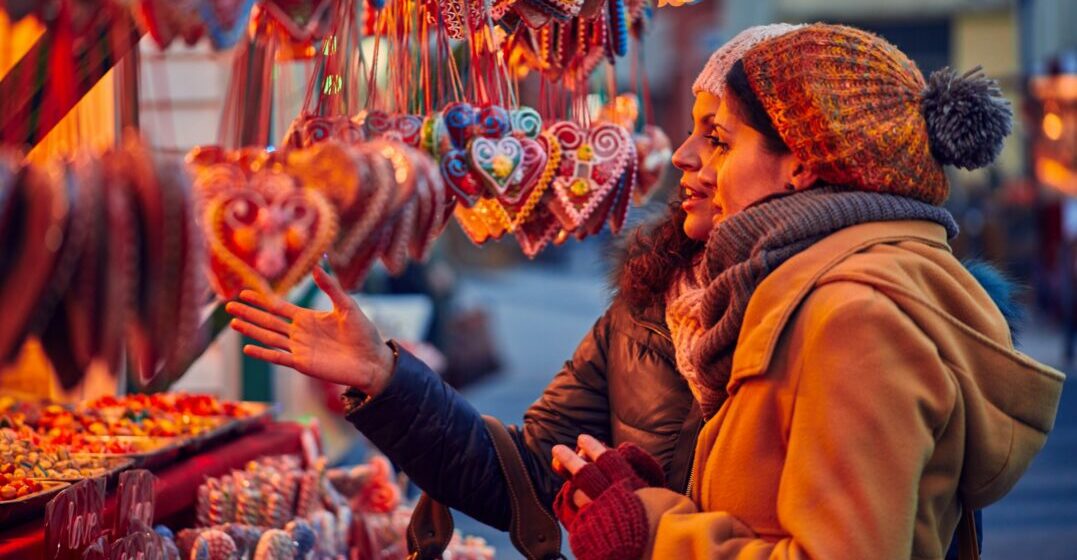Updated on January 9, 2024

10 unique Christmas traditions from around the world

You’ve likely heard of Christmas trees and Santa Clause, but there are other ways that different cultures celebrate Christmas, too. Here are a few of the most unique Christmas traditions found around the globe. Get into the Christmas spirit with these uncommon, yet awesome traditions!
In honor of Christmas, the city of San Fernando in the Philippines hosts The Giant Lantern Festival. True to the name, this festival showcases huge lantern displays with Christmas designs each year on the Saturday before Christmas Eve. As San Fernando is the Christmas capital of the Philippines, they go big with lantern displays that are up to 6 meters in size, illuminated by electric bulbs that create a kaleidoscope effect. The festival attracts visitors from all around the world, so the participating villages strive to outdo each other by creating the most elaborate pattern.
While Germany and Austria are known for their love of Christmas trees, Austria has its own particular Christmas tradition involving a scary horned figure known as Krampus. The story of Krampus takes the “naughty list” to the extreme by punishing children for their bad behavior. There are also “Krampus runs” where young men in the cities dress up as Krampus and drink alcohol in celebration.
Japan doesn’t consider Christmas a national holiday, but they do still celebrate in their own way – but not with turkey. Instead, they gather around the dinner table to chow down on the infamous Kentucky Fried Chicken. The tradition stems from a marketing campaign in 1974 known as “Kurisumasu ni wa kentakkii!” (Kentucky for Christmas!). It worked so well that to this day, people order their KFC boxes months in advance in order to avoid two hour long pick up lines.
Known as Dia de las Velitas (Little Candles Day) Colombia kicks off the Christmas season by honoring the Virgin Mary and the Immaculate Conception by placing lanterns on their balconies, window sills, and front yards. What started as a few houses has grown into entire cities alight with candle displays. In the neighborhood of Quimbaya, households have begun competing against each other to see who can create the largest display.
In Finland, they start Christmas morning off with the yummy tradition of eating porridge made with rice and milk and topped with cinnamon or butter. Families with children hide an almond inside one of the bowls and whoever finds it “wins” an extra gift. After the Christmas festivities are over, they also warm up together in a sauna.
In New Zealand, Christmas occurs not with a flurry of snow, but instead happens during the middle of summer. As a result, their Christmas traditions involve eating together at a large BBQ filled with seafood and seasonal vegetables. Coincidentally, the Pohutukawa Tree blooms in a vibrant red and is used as their Christmas tree. They stand under its shade and sing Christmas carols in English and in their traditional language known as Maori.
In Germany, there are two Christmas figures: the Weihnachtsmann (Father Christmas) and St. Nicholas. As opposed to the popular traditions that take place on Christmas Eve, Nikolaus Tag (The Day of St. Nicholas) takes place on December 6th. According to legend, St. Nicholas travels through the night accompanied by a donkey and his sidekick Farmhand Knecht Rupert, a mischievous devil-like character. While St. Nicholas leaves gifts, visits hospitals and churches, and sings songs with children, Knecht Rupert carries a stick to whip children who have misbehaved.
Members of the Church retell the Christmas story in the beginning of December to mark the start of the Christmas season in Mexico. Known as Las Posadas, the largest reenactment takes place in the form of a march that signifies the journey that Mary and Joseph took to Bethlehem. As part of the celebration, marchers and church-goers adorn themselves with bright red poinsettia flowers that are commonly used as holiday decorations, as well as other large, elaborate costumes.
While many families adorn their Christmas trees in spectacular lights and ornaments, Ukrainians take a different approach. According to the Legend of the Christmas Spider, a family who was living in poverty found a tree growing inside their house. When Christmas Eve came, the tree was covered in spider webs. By the time they awoke the next morning, the spider webs had been transformed into silver and gold. So in order to bring about their own luck, families in Ukraine decorate their Christmas trees with spider webs to reference the legend.
In Iceland, a group of mischievous, troll-like characters known as the Yule Lads visit children on the 13 nights before Christmas. Each night, children are instructed to put their best shoes on the window and a different Yule Lad comes and leaves gifts for the nice children and rotting potatoes for the naughty ones.